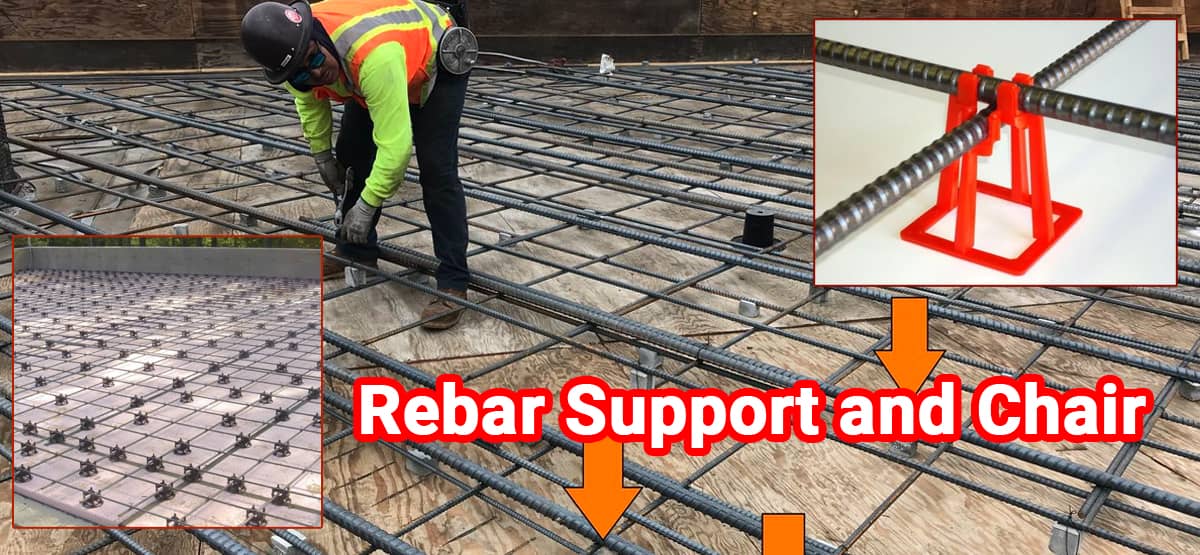A Brief Guide to Rebar Support and Chair

If you're working on a construction project that involves heavy steel rebar and want to know what different types of rebar support are available, you've come to the right place.In addition, for consistent dispersion, a rebar chair might be the finest option.
Concrete reinforcement is added at specific separations and directions to ensure that steel regions in each segment of the basic portion are satisfactory.
As a result, if the request for splitting and direction is not followed on site according to the structure's function, the rebar will be ineffective.
We've seen 12 metre long dowels placed in slanted positions and in various levels with a 150 mm separation in monstrous building projects.
In such cases, the Contractor would have to spend a significant amount of money on rebar supports and rebar chairs.
Disappointment with any of these supports could result in disaster and ruin on the site, so in this tutorial, we'll look at the numerous back support options available on the market and see which one is the best fit for your needs.
A rebar chair, also known as a rebar spacer, is a rebar support device that ensures that the rebar is in place and divided properly prior to the pouring of cement. These auxiliary devices were designed to be a part of the indestructible structure and were implanted in the solid.
Varieties of Rebar Support
Despite the fact that this area of reinforced solid construction has been overlooked and discarded in the past, a significant amount of study has recently been performed on a specific type of rebar support, which is:-
- Rebar Chair Support or Stools
- Rebar Spacer Support
The term "rebar chair" refers to a support framework that is ideal for reinforced solid slabs, floors, sidewalks, or garages; they raise the rebar off the ground, ensuring its location and providing the required spread from the start.
If the chunk includes multiple layers of rebar, these seats should have enough area to accommodate a couple of them, as required by the basic structure.
Rebar spacers are rebar supports that are used in reinforced solid dividers, segments, docks, or heaps, among other things.
They keep the vertical and even rebar in place by allowing the interior to focus on separating the numerous layers of rebar, as well as providing the appropriate spread from the formwork's edge.
Because the solid business is constantly developing, there are different solutions available to meet your requirements. You may now obtain level base chairs, which prevent the chair points from highlighting the fume obstruction and provide a more stable surface.
There are also steel chairs with plastic tips that are often more efficient and can be used when little patches of erosion can be seen on a surface level.
Treated steel chairs are also available, but they will cost more than standard ones, and they are best used where plastic is not authorised in the solid or when the weight is too much for the plastic chairs.
Rebar Support Problems
Rebar Support items, as represented below, are not 100 percent convincing or viable as long as you understand how to deal with and operate with them. When the required spread exceeds 2.5 inches, chairs may be spilt since the stature to width ratio is unlikely to be sufficient to prevent labourers from strolling over.
Similarly, when they are too far apart, the rebar will twist in the middle due to its weight, and a few zones would require extra seats or the chairs will completely break due to the heavy weight.
During the installation process, certain steel chairs with a plastic tip may loosen the plastic assurance, creating a potential area where rust can begin to affect your solid surface.
Rebar Support Cost
The cost of a chair is mostly determined by the type of chair. A 100-chair crate costs roughly $60, whereas a 50-pack costs around $30 or $35 each box.Other more complicated frameworks can cost more than $15 per chair, but they are more durable and won't spill.
There are a variety of mix and boxes that can yield more than 500 units, so the more you buy, the better the deal. Remember that the establishment fee is the cheapest and will help you acquire the best steady spread in the long run.
